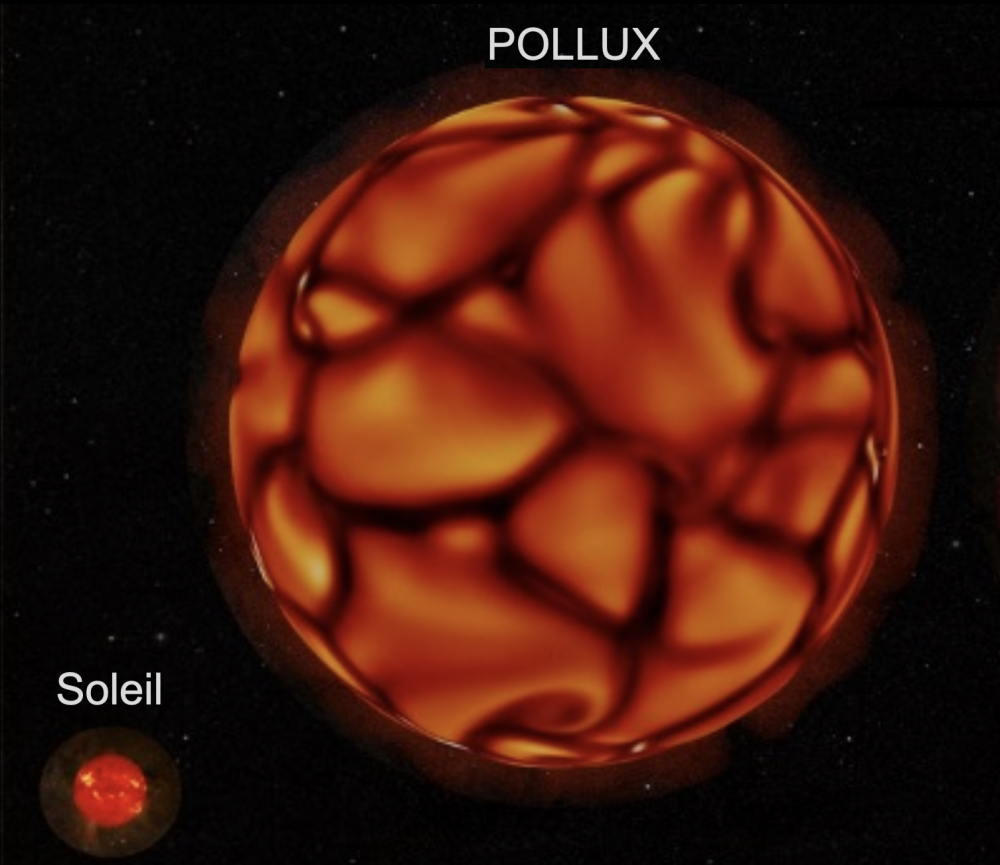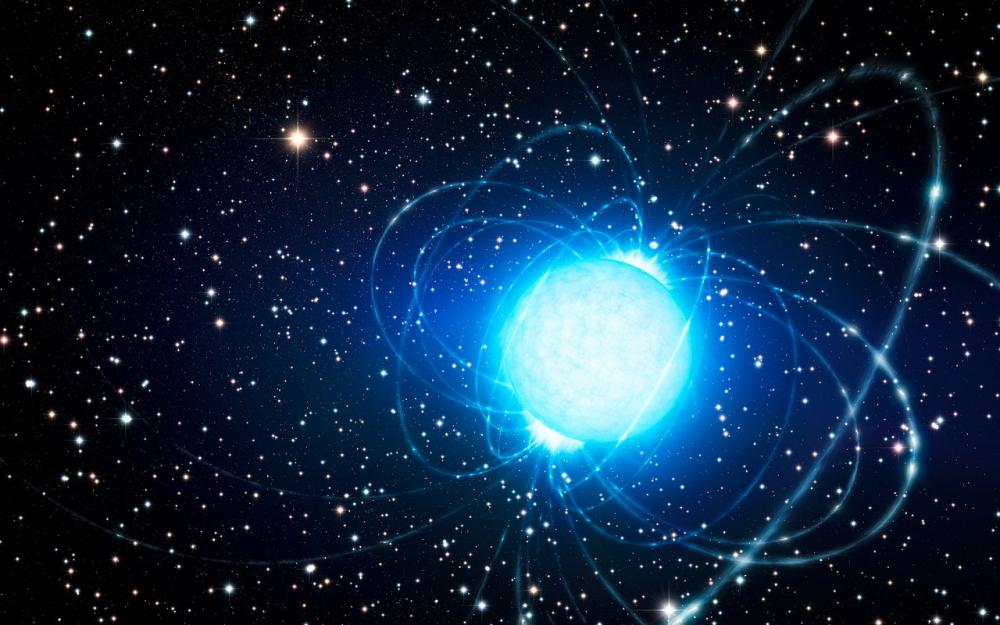The Sun's magnetic field is generated by a dynamo effect, caused by convection and rotation in its envelope. It will evolve in the distant future when our star becomes a red giant, an evolved star characterised by an extended envelope and much slower rotation. The question then arises: how will the magnetic field evolve when our Sun transforms?
To answer this question, a team of researchers affiliated to the Astrophysics Department at CEA Paris-Saclay and the OSU OREME at the University of Montpellier have carried out several advanced high-performance numerical simulations of the star Pollux, a red giant that serves as an example of what the Sun could become, with a very weak magnetic field of less than 1 Gauss, due to its extended envelope.
These simulations reproduce the observed value and explain this low value by showing that between 2 and 8% of the plasma's kinetic (motion) energy is converted into magnetic energy, depending on the size of the convection cells at the source of the dynamo. Smaller cells create less intense and more complex fields, because the correlation between magnetic and convective structures diminishes on a large scale. The study also shows that Pollux's magnetic field reverses its polarity over several years, like the Sun's, a phenomenon that has not yet been observed but that is suggested by the simulations and needs to be observed over a longer period to be confirmed.
In addition, this work enriches our understanding of the magnetism of giant stars and opens up new prospects for ESA's PLATO mission, which will explore the magnetic activity of stars and its impact on exoplanets.
This study has been published in The Astrophysical Journal.
Magnetars are neutron stars displaying the most intense magnetic fields observed in the Universe. To tackle the still-open question of the origin of these extreme magnetic fields, a scenario was proposed by a team from the Department of Astrophysics (DAp) at CEA Saclay, invoking the Tayler-Spruit dynamo mechanism, triggered by matter falling onto the young neutron star after the supernova explosion. The team of scientists had shown in 2022 through analytical analysis that this type of dynamo could explain the intensity of the magnetic field of magnetars. In this new study, the team confirms this result through three-dimensional numerical simulations. This will have significant implications for understanding the origin of magnetic fields, not only for magnetars but also for stellar evolution where the same dynamo mechanism could be at work.
This new study was published in the journal Monthly Notices of the Royal Astronomical Society: Letters.



